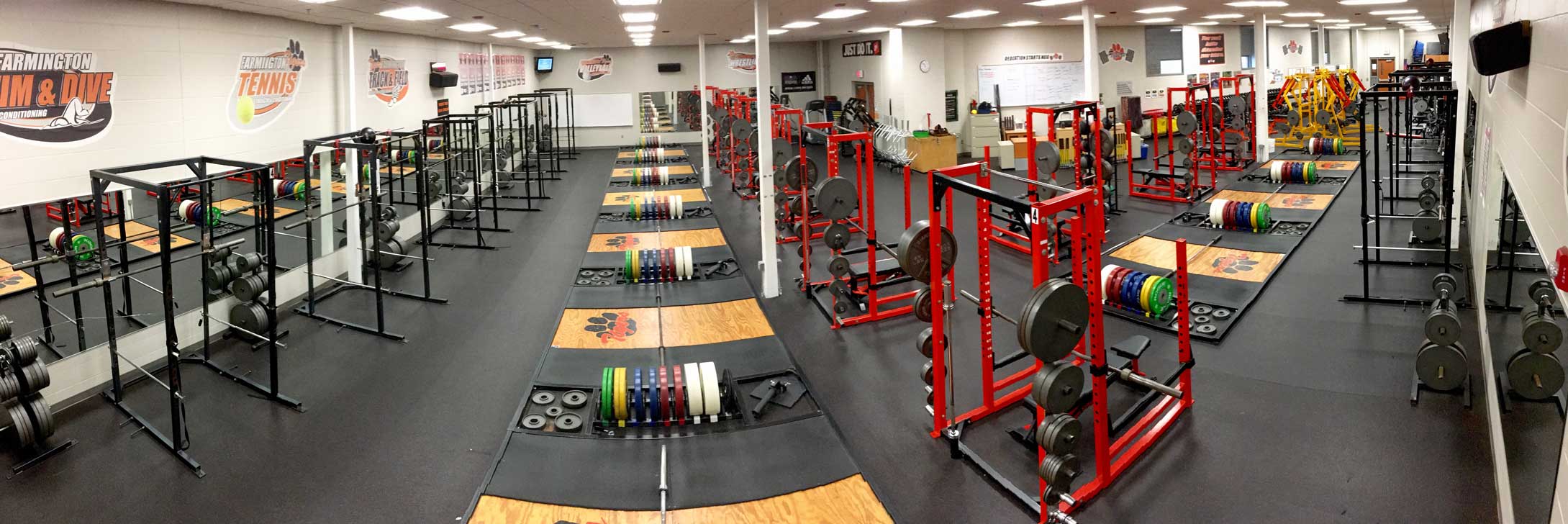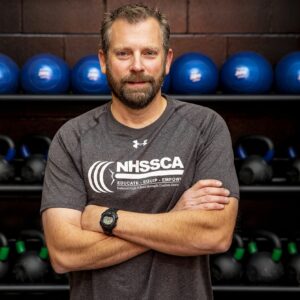High school strength coaches have many challenges. One of them is working with large groups of students and athletes. Trying to figure out the best way for large groups to get in an effective workout in a weight room is tough for most of us. Almost all high school strength coaches are limited by space and equipment. Therefore, we have to get creative and develop a good system that works best for us in our situation.
I, like most coaches, have gone through an ongoing trial and error process. I’m always searching for that optimal way for all athletes to get the best possible workout in our weight room.
Planning a Redesign
When I initially took an interest in strength and conditioning, most “good” weight rooms had the same types of equipment – squat racks, full benches with attached bar racks, incline benches with racks, platforms, dumbbells, and machines. When the first multi-racks and half racks came out, it was a game changer. A portable adjustable bench allows you to combine your squat rack and platform together, creating one station where anything is possible.
My first weight room in Farmington was very small, but I was fortunate to get some funding for new equipment. At the time, I had four full-cage squat racks, platforms, and full benches. Those stations were where we did the core movements of our program. I then determined that I could fit eight of them in the room, doubling the number of squat racks and platforms.
Although in theory, this sounded great, had we made this change, we would have actually decreased our total workstations from 12 to 8. By combining stations, only one person or group would be able to use the station that I ordinarily would have had three groups before. With this in mind, I decided to keep our stations separate and instead switch out our full benches and purchase four multi racks with benches for additional versatility.

Over the next few years, we continued to expand, continuously adding to our three main stations, ending up with nine squat racks, platforms, and multi-racks with adjustable benches; totaling 27 workstations. With groups of three athletes per station, we can now handle 81 kids with ease. If I add a fourth station using dumbbells or a mobility station, that number jumps to 108 athletes.
Rotating Stations
The key for us in keeping things running smoothly during our workouts has been the use of a timer/clock. I like to start with three main stations. This usually doesn’t change, unless I have more kids than usual come in. Each station is lined up in a row, and each row of three stations is numbered 1-9. Depending on the workout for the day, we will usually go 9-10 minutes at each station, usually getting in about 5 sets per athlete.
When the time is up, everyone rotates together to the next station in their row. When everyone switches at the same time and stays in their row, the rotation happens very smoothly and very quickly. Everyone has a spot to go to and there is no wandering around or waiting for equipment to open up.
Once we finish up our three main lifts for the day, we will then move on to our auxiliary lifts. In the past, I have used the timer for those exercises as well. This usually cuts down the time so it’s a little shorter. Most of the time, I let students and athletes go on their own to finish the workout at their pace. Sometimes I will give them options too, having them choose three of the five auxiliary lifts, for example. With in-season teams, we usually stick to just the main three stations. With that, we can get the essential things done and be finished in a half hour or less.
Structured Training
The final piece to making this whole system work program-wide is to go with scheduled lifting times for in-season teams and off-season athletes. Everyone has to be there at the same time, ready to start all together. It doesn’t work if athletes or teams just wander in at random times.
When we first switched to this more structured format, I got a lot of complaints. Kids were used to coming in whenever they wanted to after school, get their workout, and go at their own pace. It was very easy to get off task. Now, it’s just ingrained in them that they know we are starting at one of the three stations. They pick a spot to start at, get their weights loaded, and then get ready for the “Go” signal. It’s taken me awhile to get here, but what we have set up now, works extremely well for us.
To implement a system like this ask yourself these questions:
- What do I have for equipment?
- Do I have enough of certain things to create a station with them?
- Is the equipment laid out in a way that allows athletes to easily switch stations?
- How many stations will I need, based on the number athletes I will be working with at one time?
I highly recommend trying something structured like this. With a little trial and error, I’m sure you can find a system that will work for you when managing large groups.




